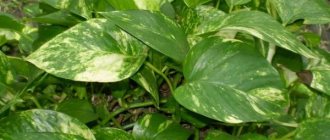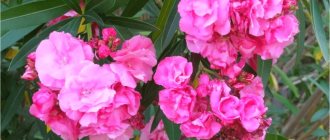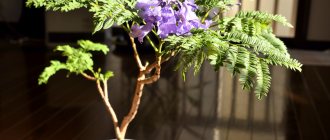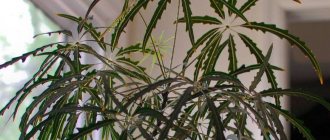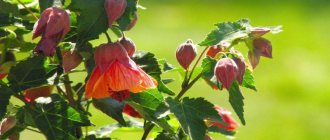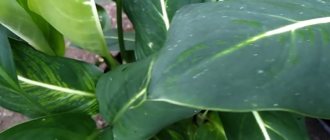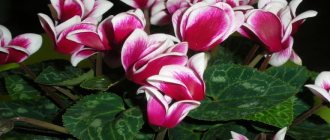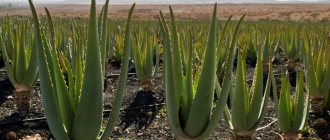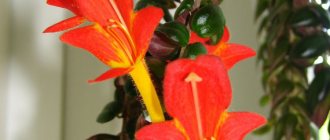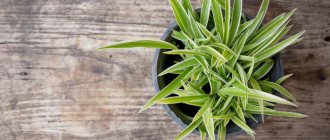Fern is the oldest plant that survived the era of reptiles, witnessed the development of the inhabitants of our planet, and now grows successfully both in nature and in the room. According to gardeners, the interest in the plant can be explained by the beauty of the uneven leaves and the easy care of indoor ferns at home.
Currently, there are about 10 thousand types of ferns, although adherents of indoor plants, naturally, have much fewer species.
On the windows of the house there are the most undemanding and at the same time charming plants.
Is it possible to keep a fern at home?
There are many signs and superstitions associated with this mysterious plant. This plant is surrounded by mystery and mystery. According to legends, it is believed that if someone sees one of the types of ferns blooming in the forest, then such a person will live a long and happy life. Is this really so, and why are there so many legends around this flower?
Caring for Popular Fern Varieties
Signs and superstitions about ferns
Signs say that if an indoor fern grows in a house, then its owner will have great luck and may find a treasure. Also, according to superstitions, owners of indoor ferns are guaranteed:
- harmony in family relationships;
- finding a common language between different generations;
- monetary wealth and financial well-being.
- protection from evil spirits.
It is necessary to carry out proper care for different types of ferns so that the fronds (leaves) do not begin to fall off
But in addition to good signs, there are also negative ones:
- a fern in the house is an energy vampire and takes away strength from household members;
- owners of this plant often have headaches;
- fern brings misfortune.
Attention: ferns in the house can cause constant headaches in the morning, as they absorb large amounts of oxygen. It is not recommended to place it in the bedroom. This plant can also adversely affect allergy sufferers.
Description of the plant and its features
Ferns appeared on the planet millions of years ago. But its appearance suggests that the plant has not fully developed into the usual leaf-branch forms, because what is considered a leaf is actually a flat branch - the leaf blades are located in the same plane.
The main feature of fern is its adaptability to any conditions. The plant is grown in the garden and apartment, and the same species.
I would like to debunk the myth about the flowering of this species. Indoor fern does not bloom, since its method of reproduction is through spores that ripen on the back of the leaf blades. People who believe in the flowering of a fern at home and its supernatural power must understand that this phenomenon is impossible and something out of the ordinary must happen for the plant to bloom.
If someone is able to force a non-flowering plant to bloom with the power of thought, then this person will no longer need the ability of a fern. This is esoteric.
About 10 thousand species grow on earth but only a few varieties are suitable for home cultivation. There are even aquarium species that can grow in water. All varieties differ in height and size - there are small flowers up to 25 cm, there are huge tree-like plants, originally from the Mesozoic era.
Carefully! When caring for an indoor fern, you need to know that the leaves absorb oxygen at night, so you can’t place the pot in the bedroom - this can cause hypoxia with all the ensuing troubles
The plant is considered an oxygen indicator. If it grows in a city apartment, where the air is polluted with exhaust gases, then its growth will be slow and its immunity will be weak. The less oxygen in the air, the more difficult it is for the fern to survive.
Superstitions about ferns
There are many superstitions regarding indoor ferns. According to one version, it draws energy from a sleeping person, but this is explained by the natural need for oxygen. If the room is not ventilated and there is no air access, people will have to share oxygen with the plant.
There are many such moments. You need to consider this species simply as a decoration for the house and not attribute to it qualities that it does not have - this is the answer to the question of whether it is possible to keep a fern at home.
It is worth considering whether people prone to pollen allergies should have this plant. The spores could theoretically cause a reaction on the skin.
Edible and poisonous specimens
In nature you can find ferns that are suitable for consumption. Their main difference from poisonous ones is their pale green leaves, and the plants themselves are small in size. Inedible species have dark green leaves and are larger in size.
Edible species include:
- Common bracken. Habitat: Far East, Moscow region, Ural, Siberia.
- Common ostrich – Altai, Transbaikalia, Krasnodar region.
- Osmunda asiatica – Primorsky Krai.
Edible sprouts are collected in early May, when they are still very young, juicy and soft.
Idea! If you plant this species in the garden, you can annually collect and prepare rachis for culinary purposes, especially since the soil in the garden is not contaminated with toxins - the fern absorbs all impurities, like mushrooms
Indoor fern varieties: what are they, description and photo
It would seem that all ferns are the same. But in fact, there are more than 10 thousand different types of them. Let's look at popular types with names and photos of this plant that are suitable for growing indoors:
- Nephrolepis. The botanical name of the genus was Nephrolepis exaltata. A plant that has 30 species. Ideal for breeding at home. Grows almost 2 meters in length. An unpretentious plant.
- Pelley. The genus got its name from the Greek word “pellos” - “dark”, which characterizes the color of the stems of Pellaea leaves. It is characterized by the unusual color of the dark green plates. According to the types of pellea, it is divided into pellea spear-shaped and pellea rotundifolia. The plant of the leaf family loves high humidity. Therefore, watering must be done frequently. If you overdo it, the foliage becomes brown or black and begins to crumble a lot.
- Polydomium (centipede). The genus got its name from Perunov's color. Rarely grown at home. Popular types of polydomium golden, pimply. Plants are watered frequently.
- Pteris Cretan, Latin name Pteris cretica. One of the types of fern. It comes with curly, sword-shaped green leaves, which are easy to care for.
One of the fern species is the Asplenium variety. This is a decorative deciduous crop that is popular with many gardeners. Asplenium feels great in open ground, even at home. With proper care, the asplenium bush and crown will often grow dense and quite large. Asplenium foliage is bright green and can be pinnately dissected or simple.
Interesting: In nature there is a fern called “Deer Horn”. This beautiful ornamental perennial plant grows on the Asia-Australia side. Deer Antler reproduces by lateral shoots, vegetatively. The leaves of this plant form a large rosette that opens very slowly.
Characteristics of fern species
| Type name | Characteristics |
| Adiantum Radi | Graceful foliage, well branched, dark petioles |
| Adiantum finely pubescent | The foliage is forked at the base, young leaves are pinkish-brown in color. |
| Adiantum Venus hair | Its thin petioles look like hair, their color is light brown, the foliage is round, small, bright emerald |
| Asplenium nest | Grows well in partial shade, requires high air humidity, the foliage has the shape of a gladiator's sword, a vein of a darker shade runs through the center of the leaf, the edges are slightly wavy, can stretch up to 0.6 m in length |
| Asplenium bulbiferous | The petioles of the plant resemble wires in appearance; they are dark in color; the foliage is pinnate and has a rich emerald color. |
| Aglaomorpha Meyena | The rhizome of this fern is hairy and creeping. On the aboveground part of the flower there are simultaneously wide and narrow foliage |
| Blechnum humpback | The crown of this fern can grow up to a meter wide. Therefore, it requires a spacious room. The foliage is tough, the main trunk of an adult plant is well developed |
| Cytobothium Shide | The stems of this species can reach a height of up to 2.4 m. The foliage is arched, curved, carved, pale emerald green |
| Cirtomium crescent | The species is not afraid of drought and drafts. The leaves are elongated, carved along the edges, their color is dark emerald. |
| Davallia | The foliage of this fern is similar to carrot tops, and the rhizome usually grows out from the soil of the pot. |
| Dixonia protruding | This species requires a lot of free space, since an adult plant can reach a height of 5–6 meters. Its foliage is leathery and faded green. The trunk is powerful, dark brown in color. |
| Didymohlena slightly truncated | It also grows well in the shade. The foliage is shiny, leathery, small, truncated, green with a brown tint. |
| Nephrolepsis sublime | Grows well in the shade, but requires regular watering and high humidity. The foliage is located vertically, its edges are smooth. The stems are long and thin, covered with thin scales. |
| Nephrolepis cordifolia | The foliage can stretch up to 0.6 m in length. |
| Pellea rotundifolia | The plant reaches a height of up to 0.3 m, the rhizomes are small. The foliage is round, leathery. |
Where is the best place to put a plant at home?
The fern can be placed in any room except the nursery and bedroom. This is due to the fact that at night the plant releases carbon dioxide, which can lead to headaches in the morning. This applies to any variety.
Nephrolepis leaves are called fronds. Nephrolepis has more than 30 leaf species.
In general, any type of fern in the house:
- absorbs toxins;
- humidifies the air;
- absorbs radiation from household appliances.
Nephrolepis in the kitchen: if the habitat is very humid, nephrolepis is more comfortable
Therefore, one of its types should be placed next to household appliances. But the plant cannot be placed in direct sunlight or in drafts. There is also no need to move the plant several times.
The height of a green, actively growing plant reaches half a meter or more
Nephrolepis xiphoid
A very impressive but large plant. The leaves grow from a meter to 2.5 in length, so nephrolepis xiphoid is not suitable for small spaces. The fern will “eat up” the useful living space and will not leave any free space in the room. But in public spaces and spacious houses the plant will look very organic. Shiny linear segments of rich green color have wavy edges, which looks unusual and extremely decorative.
How to care for ferns at home
To create favorable conditions for keeping one of the types of indoor ferns, you need to take care of: lighting of the plant, air temperature, and conditions of keeping. Let's take a closer look at how to care for ferns, as well as their green varieties.
Lighting
The fern thrives in the shade. The plant should not be placed in direct sunlight. Sunlight must be diffused. To do this, it is recommended to adjust the blinds on the windows in such a way as to reduce a large amount of light. It is best to place the plant on a north window, as south and east windows let in too much light, which the fern does not like. If the plant is rearranged many times, this will also negatively affect its growth and the fronds will begin to crumble and turn yellow.
Temperature
Caring for fern varieties at home also comes down to creating the optimal temperature:
- in summer, ferns love air temperatures from + 20 to +25 degrees above zero;
- in winter the temperature can be reduced to +20...+15 degrees above zero.
Attention: ferns do not tolerate drafts. And because of this, the fronds are shed, losing their decorative effect.
Nephrolepsis can be terrestrial or epiphytic.
Watering
The fern should be watered carefully. It does not like dry soil, but does not tolerate waterlogging. Watering is carried out with warm water without chlorine several times a week. To do this, you can use both purchased water and settled water from the tap or rain.
Fern fronds are feathery leaves. Fronds are smooth, covered with hairs or scales, thin or leathery, light or dark green.
Humidity
Ferns love moist air. It is best to place a humidifier in the room with this plant. Or you can do it easier by placing the pot with the plant on a tray with water and expanded clay. The main thing is that the roots of the plant do not come into contact with water. Otherwise the flower will simply rot.
High humidity in the house has a very good effect on the growth and development of leaves. The fronds of the fern begin to actively grow upward. This applies to different varieties of ferns: adiantum, pteris, blechnum and pelley.
Nephrolepis sublime
The genus of ferns Nephrolepis is the most widespread in nature. Flower growers appreciated its unpretentiousness and resistance to disease. Today, nephrolepis is often found at home.
One of the most popular ferns for growing in pots is Nephrolepis sublime. It is easier to care for than its counterparts and looks very elegant. Dense soft green foliage with numerous dissections resembles exotic feathers. It reaches a height of 70 cm.
Ideal growing conditions are high humidity, warmth and diffused light. If all three components are met, the fern quickly grows and becomes a striking decorative element.
Replanting an indoor fern
Beginner gardeners are interested in the question: how to replant indoor ferns? This is quite easy and simple to do. It is enough to prepare a new, larger pot, soil for ferns, and have some free time.
What kind of soil does an indoor fern need?
Ferns cannot be planted in ordinary garden soil. It is better if it is loose high-moor peat, coniferous and greenhouse soil. It needs special soil, which can be purchased at a garden store. You can also prepare it yourself from:
- soil;
- peat;
- humus;
- garden soil.
What kind of pot do you need?
The fern pot must be short and wide. This is due to the fact that its roots do not go deep into the pot, but are located almost on the surface. As for the materials for making a fern pot, experienced gardeners recommend choosing clay containers that absorb moisture well.
Fertilizer
Caring for ferns at home comes down to applying fertilizers 3-4 times a month. Although some experienced gardeners believe that feeding this indoor plant is not necessary. However, if its leaves become small and lose color, then it is recommended to fertilize the flower:
- potassium salt;
- superphosphate;
- ammonium nitrate.
Fertilizing the soil of common plant species is usually carried out in the spring.
Attention: ferns are not fed with organic fertilizers, as they cause burns to their leaves and roots. Therefore, it is important to properly care for the green leaves of any type of fern.
Features of transplantation
The plant is replanted as needed. But, as a rule, this must be done annually, since the plant grows at a rapid pace and becomes cramped in the pot. The fern is transplanted by transferring it to another pot. In this case, there is no need to remove the soil from the roots. Simply place the plant with a lump of earth in a larger pot and add soil.
The Nephrolepis variety is one of the very popular types of fern that does not require special care. The period of active growth is from April to October. Feeding should be carried out more often than 2 times within one year.
Attention: if the plant is sick, then when replanting its roots are cleared of soil, treated with special preparations, and the plant is planted in new soil.
Structure of a houseplant
Ferns are located among the lower plants, as a result they have the features of the oldest plants in the flora, while they have successfully adapted to the conditions that have changed over so many years.
This specificity is undeniable when studying the structure of the fern. The foliage, or more precisely the fronds, represents the upper part of the flower and, for the most part, is of an interesting and repeatedly cut type.
Young, unbloomed leaf blades of plants are elastically twisted into springs.
As they grow, they bloom, darken and thicken. The roots of the plant are located underground.
Reproduction
Let's look at how ferns reproduce:
- sowing spores;
- dividing the bush;
- shoots;
- lateral buds.
The concentration of the nutrient solution should be ¼ of that indicated on the package
Attention: fern propagation by sowing spores is used extremely rarely, even by experienced gardeners.
As for dividing the bush, this method is used for species with a branched root system. In this case, the rhizome is simply divided into different parts (the main thing is that the rhizome contains heads, that is, attachment points for the leaves). It is recommended to separate areas with two shoots. And then the divisions are planted in pots.
Transplantation and pruning of the lower part of the plant should be carried out in spring or summer. It is better to do this with long tools
The plant can be called creeping, as it reproduces by shoots in the form of arrows. It is enough to bend them into a container with soil and secure them. After some time, the shoot will quickly take root and can be separated from the mother plant.
The length of the spore-bearing stem can reach 20 cm. As for propagation by lateral buds, they are separated when roots are formed. Young sprouts are transplanted into mini greenhouses, where the air temperature is maintained at least 23 degrees above zero. The largest stems are left. When the first leaves appear on the buds, the seedlings can be transplanted into separate pots.
In nature, there are many varieties that belong to the leaf family: nephrolepis, adiantum, pteris, blechnum, pellea.
Attention: only ferns of the following species reproduce by lateral buds: Adiantum, Pellea, Pteris.
Nephrolepis Green Lady
Spreading lush plant, leaves are dark green, pinnate, collected in a rosette. Openwork foliage extends from a vertically located rhizome. A good option for not the most lit corners of the apartment.
Nephrolepis Green Lady in nature grows under the canopy of trees and is constantly in partial shade, so the lack of sunlight will even be a plus in growing this species.
Diseases and pests of house fern
Fern has good immunity against major diseases and pests, so it is not prone to getting sick often. But if watering is carried out incorrectly and water stagnates in the roots of the plant, then troubles with diseases that develop as a result cannot be avoided.
- Rot. The plant will tell you that watering is not being done properly by the appearance of brown spots on the leaves (they begin to appear on the tops of the leaves, become brown and gradually the entire leaf dries out).
- Nematodes. The cause of the appearance of the pest may be watering with cold or unsettled water. You can try to save the fern, you just need to replant it immediately, treating it with Actellik solution immediately before planting.
- Aphids, thrips, scale insects. The invasion of these insects can be caused by excessively dry air in the room. The affected plant is treated with Karbofos or Actellik. And in order to prevent the appearance of these parasites, it is recommended to systematically irrigate the fern.
Sources:
https://glav-dacha.ru/paporotnik-komnatnyy-uhod/ https://oflore.ru/uhod-za-komnatnym-paporotnikom-v-domashnih-usloviyah-4410/ https://podokonnik.temadnya.com/ 1741980332974672055/uhod-i-razmnozhenie-v-domashnih-usloviyah-paporotnika-komnatnogo/
Interesting properties
In popular belief, this plant has magical properties.
Since time immemorial, it has been used not only for magical rituals, but also for the treatment of many diseases:
- With the help of a flower obtained at midnight before Ivan Kupala, you can find treasures.
- To attract the groom , the girl weaves a branch of fern into her braids and wears him like that.
- To get rid of pain during radiculitis , you need to fill the mattress with leaves and branches of fern. The healing book claims that pain and inflammation will quickly go away.
- The root of this plant is used in magic against the evil eye. To do this, the crushed part of the root is added to various potions. Anyone who drinks this decoction will get rid of diseases caused by the “evil eye.” It can protect against diseases. The root helps with love spells and lapels, and removes the effect of any ritual that the person did not agree to perform.
- If you place a whole fern root over your home, it will protect the inhabitants of the house from negative energy. A sorcerer and any person with evil intentions cannot enter such a dwelling.
- To use fern as a reliable remedy for the evil eye , you should wear it as close to your body as possible. To do this, the fern is dug up at dawn, washed, and placed in the sun to dry. It should be applied the next day.
- The root is used for gypsies . The plant helps to maintain clarity of thought and will not allow a person to deceive himself when communicating with her.
Some peoples use fern for pickling. Prepared products with fern added to the brine have very interesting taste qualities.
Advantages and disadvantages of keeping houses
Indoor fern is ideal for growing indoors. Cultivating it does not cause any particular problems. In addition, the original shapes of the leaves bring a magical, exotic atmosphere to the apartment.
Decorative value
Fern nephrolepis - home care and reproduction
The ability to decorate the interior of a house determines the decorative value of the plant; various varieties of fern give florists a wide choice for using one or another species. Each of them has its own distinctive characteristics, expressed in the shape and size of stems and leaves. Street fern is effectively used in landscape design, decorating gardens and personal plots.
Benefits and harms for the inhabitants of the house
Numerous legends and superstitions are associated with this plant. There are scientifically proven beneficial and harmful properties of the plant.
The benefits that fern can bring at home:
- Effectively absorbs toxins. For example, Nephrolepis purifies the air from formaldehyde and xylene;
- Thanks to intense transpiration (the movement of water through the plant), it humidifies the air.
Important! Ferns are able to absorb electromagnetic radiation, which in the conditions of modern apartments, saturated with electromagnetic fields from various devices, is a very valuable positive property of the plant.
In addition to their benefits, ferns can cause harm to humans:
- They can provoke headaches if they are in the bedroom, due to the release of carbon dioxide at night;
- Allergy sufferers sometimes experience a negative reaction to plant spores.
Poisonous properties of individual species
The poisonous properties of fern appear when the plant is used as food or for the manufacture of medicines. The fact is that street and wild varieties are used in cooking and medicine, including many folk recipes that use various parts of the fern.
Interesting. During the First World War in England, the population replaced asparagus with young fern shoots.
Toxic effects are exerted by substances found in the rhizome of Shield and Ostrich. Bracken is poisonous, the young shoots of which are eaten by people. Moreover, a toxic effect on humans can be exerted even through milk if the animal has eaten the plant.
To avoid poisoning by fern and drugs made from it, you need to know the rules for its preparation and strictly follow the dosage of medications.
